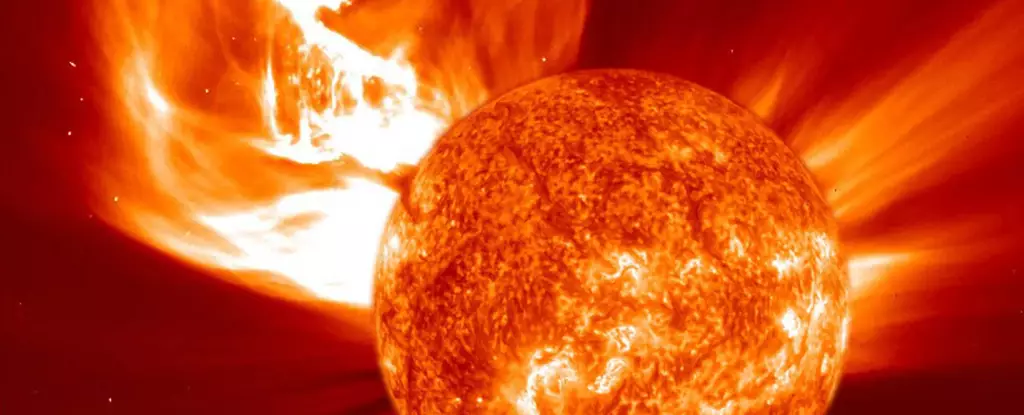In the intricate dance of technology and nature, few events underline the fragility of human-made systems within the cosmos like the recent demise of three miniature satellites belonging to the Binar Space Program at Curtin University. These CubeSats—Binar-2, 3, and 4—were designed to expand our understanding of the universe, but their mission lasted a mere two months before they burned up upon re-entering Earth’s atmosphere. While this conclusion was anticipated—indeed, “Binar” means “fireball” in the Noongar language—the satellites’ premature exit raises crucial questions about the ongoing impacts of solar activity on satellite operations.
The current solar cycle, known as Solar Cycle 25, is demonstrating an increase in solar activity that affects satellites in low Earth orbit (LEO). Solar phenomena, such as sunspots and solar flares, stem from the Sun’s shifting magnetic fields and rotate in an approximately 11-year cycle. At its zenith, solar activity can generate hazards for satellites due to enhanced radiation and atmospheric interference. Unfortunately, accurate forecasting of these solar events is still in its developmental infancy, which exacerbates the vulnerability of satellites to unpredictable solar behavior.
The immediate aftermath of such solar activity has direct implications for satellite operations. The Binar satellites, which were expected to last around six months, only survived for a third of that time. This premature ending not only cuts short valuable scientific testing but also highlights the pitfalls of reliance on traditional predictions regarding solar cycles and their effects. The charged particles released during heightened solar activity generate increased drag on satellites that orbit closely to our planet, ushering them into an early descent—much like what fate the Binar series encountered.
For CubeSats, which often lack the sophisticated maneuvering capabilities that larger and commercially viable satellites possess, the ramifications of this solar activity spell trouble. Satellites equipped with thrusters may counter excess atmospheric drag, but the Binar satellites were not endowed with such enhancements. Their small structure and reliance on passive mechanisms left them vulnerable to the whims of space weather. With these miniature devices diminishing in terms of their lifespan much sooner than anticipated, the implications are profound—particularly as more institutions and organizations invest in satellite technology.
One of the most significant concerns is the escalating cost of satellite missions that cut short due to uncontrollable factors. In commercial contexts, this could mean hefty financial losses, strengthening the case for improved forecasting methods and strategic mission planning aimed at planetary alignment within a safer operational window.
The lessons learned from the Binar satellites extend beyond individual missions and signal a need for a paradigm shift in how we approach satellite deployment. Increased solar activity is not merely a nuisance; it embodies a set of operational challenges that can jeopardize entire projects. The understanding from Binar’s mission could lead to advancements in the design and operation of future satellites, ideally suited to withstand changing space weather scenarios.
Research initiatives enhancing the understanding of space weather and its unpredictable dynamics are paramount. Greater investments in research facilities dedicated to modeling solar activity could offer far-reaching benefits, helping to safeguard a range of missions from scientific exploration to commercial endeavors.
Despite the extreme set of circumstances leading to Binar-2, 3, and 4’s untimely end, there is a sense of cautious optimism. Experts indicate that the rate of solar activity will likely calm down by 2026, progressing towards a solar minimum by 2030. This anticipated lull will provide the Binar Space Program and similar efforts an opportunity to establish and implement new strategies, benefiting from a more stable operational environment.
While Binar’s satellites may have succumbed to the fiery descent, they have left an enduring legacy. The Binar Space Program stands not merely as a reminder of the power of solar activity but as a beacon guiding future missions toward more resilient deployments amidst the complexities of space. The narrative developed through these satellites serves to inform and inspire the next generation of technologies designed to navigate the challenges inherent in our ever-evolving solar system.


Leave a Reply